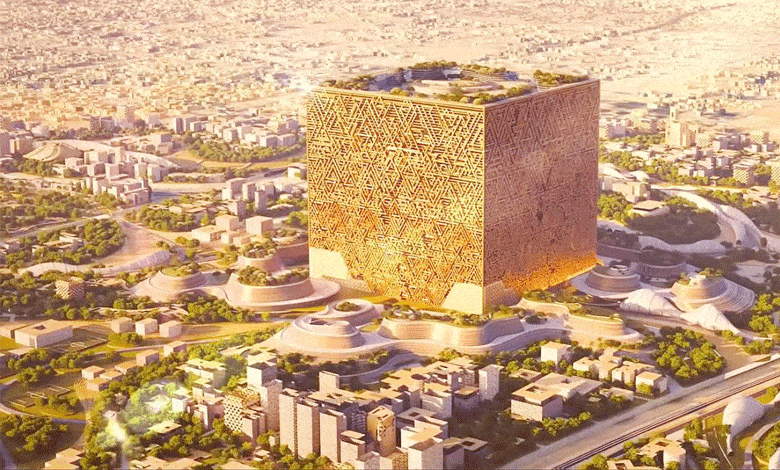Riyadh: Saudi Arabia has officially commenced construction on the $50 billion Mukaab project, which is set to become the largest building in the world. Located in Riyadh, this colossal cube is planned to rise to a height of 1,300 feet and a width of 1,200 feet, fundamentally altering the city’s skyline. Upon completion, the Mukaab will boast a volume capable of housing 20 Empire State Buildings, symbolizing a new era in the Kingdom’s quest for modern infrastructure.
The Mukaab is envisioned as a “downtown-in-a-box,” covering 2 million square feet of floor space. It will accommodate 104,000 residential units, 9,000 hotel rooms, and a variety of amenities. The project aims to establish a fully self-sufficient community, offering everything from fine dining and retail spaces to office zones and green areas. Developers at the New Murabba Development Company emphasize a “human-first” design, ensuring that accessible green spaces are within a 15-minute walk from any point inside the cube.
One of the standout features of the structure will be its massive outer screens displaying immersive, AI-driven visuals, enhancing visitor experiences with virtual realities and holographic displays, akin to the innovative technology found in the Las Vegas Sphere. The ambitious design is inspired by Saudi Arabia’s natural landscapes and traditional Najdi architecture, incorporating elements like wadi-inspired pathways and open courtyards that reflect the desert’s flowing riverbeds and distinctive mudbrick structures.
The Mukaab is funded by Saudi Arabia’s Public Investment Fund and is a key component of the Vision 2030 initiative spearheaded by Crown Prince Mohammad bin Salman. This program aims to reduce the Kingdom’s reliance on oil by diversifying its economy and promoting developments in tourism, technology, and public services. The project is expected to be completed by 2030 and is anticipated to contribute over $51 billion to the country’s non-oil GDP while creating approximately 334,000 jobs, underscoring its economic importance.
In addition to the Mukaab, Saudi Arabia is pursuing other groundbreaking initiatives such as NEOM, a fully renewable-energy city, and the Line, a 105-mile linear city designed to accommodate nine million residents. Together, these projects are reshaping the Kingdom’s landscape and pushing the boundaries of urban development, positioning Saudi Arabia as a leader in innovative city planning and sustainable design.

